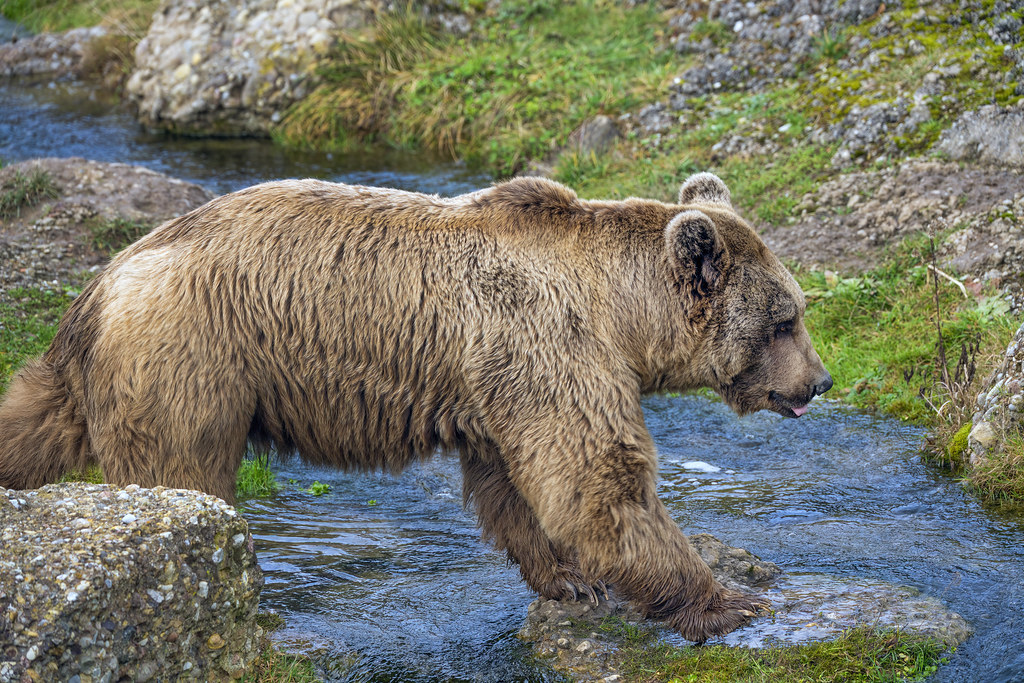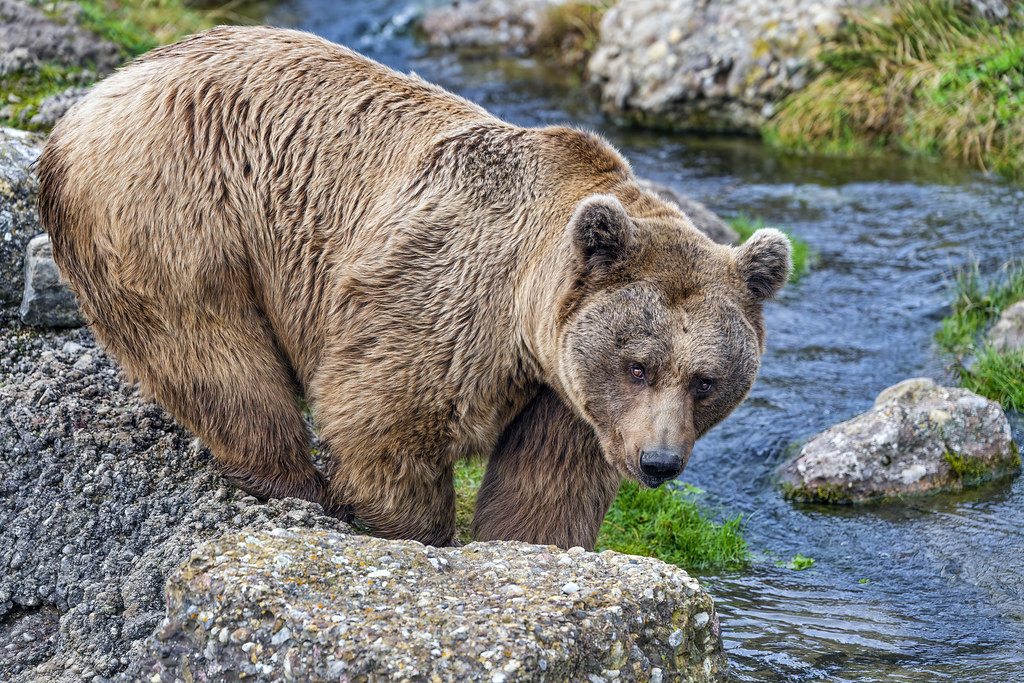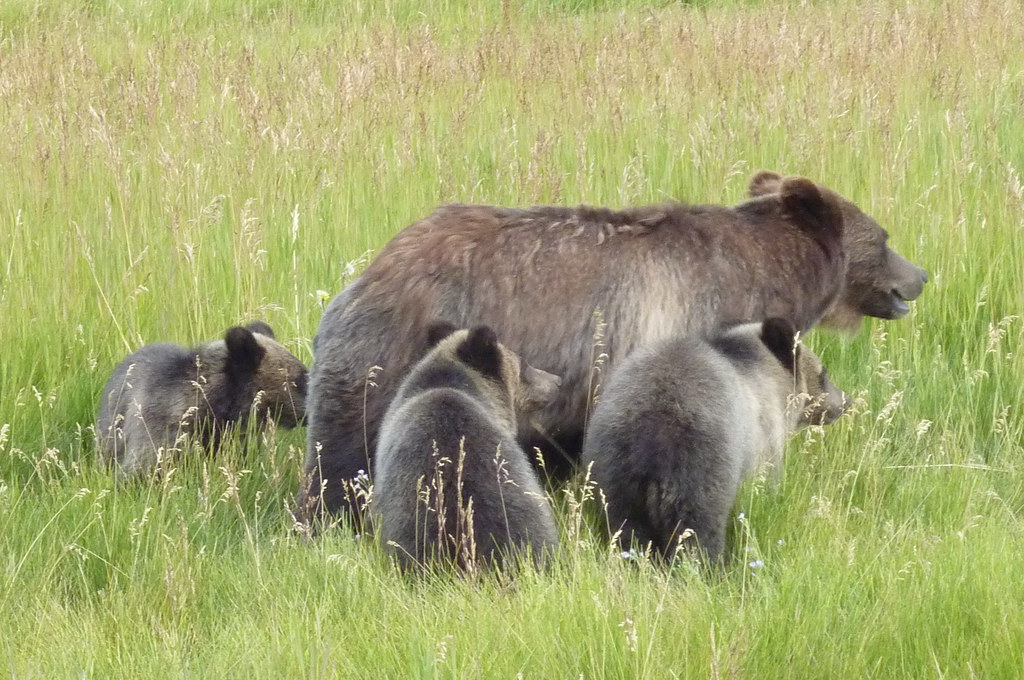When it comes to bears, most people are familiar with the concept of one living in solitude and tending to their own needs. However, what many don’t know is that when it comes to these magnificent creatures, they can actually form groups – and each group has a specific name. If you’ve ever been curious about what are a group of bears called– or just want more information about them in general–then this post is definitely for you! Learn all about the remarkable aggregations known as bear societies as we explore everything from their organization and communication methods to their variations across different species.
Contents
Understanding The Definition
What Is A Bear?
Before we dive into what are a group of bears called, let’s quickly cover the basics about these iconic animals. Bears are large, four-legged mammals found in several different regions all around the world. They’re famously known for their bulky frames and thick fur coats that help them survive even in extreme climates such as Arctic tundra or mountain ranges. The most popular bear species include grizzly bears, American black bears, polar bears, Asiatic black bears, sloth bears and sun (or honey) bears.

Why To Know The Collective Noun For Bears?
Knowing the collective noun for bears – or any other animal, for that matter – can be important if you’re a scientific researcher studying these creatures in their natural habitats. For instance, if you want to get an accurate count of how many bears are present in a certain area, then knowing what they’re called as a collective group can help you tally them up much more easily. Additionally, understanding the significance of bear societies may also give us insights on their behavior and social dynamics.
What Are A Group Of Bears Called?
Now that we know what an individual bear is like, it’s time to finally answer the question: what are a group of bears called? While there’s no universal agreement on this, most experts agree that the name for a gathering of bears is “sloth.” This term originates from the Latin word ‘ursus,’ which translates to bear. Thus, when multiple bears are found together, they can be referred to as a “sloth.”
What Is A Sleuth Of Beasr?
Apart from the term “sloth,” a group of bears is also sometimes referred to as a “sleuth.” This word is derived from the Old English word ‘sleuthe,’ which means a track or hunt. Thus, this name implies that when several bears are together in one place, they take part in an organized search for food and other resources.
What Is A Pack Of Bears?
In addition, some experts also use the term “pack” when referring to a gathering of bears. This word is derived from the Old English term ‘pacu,’ which means ‘a group of similar animals or people that stay together and travel in the same direction.’ Therefore, it aptly portrays how several bears often stick together as they roam around looking for food and shelter.
What Is A Sloth Of Bears?
By now, you should have a much better understanding of what a group of bears is called. As we mentioned earlier, the two most common terms used for this are “sloth” and “sleuth.” Additionally, experts may also refer to them as a “pack.” No matter which word you use to describe them, one thing is certain – bear societies are fascinating in their own right and deserve to be studied further.
What Is A Clan Of Bears?
Finally, it’s important to note that some experts may also refer to a gathering of bears as a “clan.” This word is derived from the Scottish Gaelic term ‘clann,’ which implies ‘a group related by blood or marriage.’ Thus, it accurately portrays how bear societies are often made up of related individuals and their offspring.
What Is A Ursine Of Bears?
Alternatively, some individuals may also refer to a gathering of bears as an “ursine.” This term is derived from the Latin word ‘ursus,’ which translates to bear. Thus, it refers to a collection of these majestic creatures in their natural habitats.
What Is The Evolution of Bears?
The bear’s evolution is a captivating tale. Over millions of years, bears have adapted to their environment, developing unique physical traits. They first emerged around 38 million years ago from terrestrial bear-dogs, which were likely omnivorous scavengers. Over time, bears improved their running speed, hunting efficiency, and sense of smell. Today, bears thrive in diverse habitats worldwide, from polar regions to high altitudes, adapting to survive in extreme conditions. They are highly adaptable, adjusting their diets and behaviors accordingly.
What Is The Origin Of Calling A Group Of Bears?
The origin of the terms used to refer to a group of bears is not clear, however some experts believe that the term “sloth” may have originated from an Old English word meaning lazy or slow. Additionally, other terms such as “sleuth” and “pack” are thought to have come from words relating to tracking or hunting in packs. The origin of the term “clan” is likely derived from Scottish Gaelic and it implies a relatedness between individuals of the same species. Lastly, “ursine” is believed to be derived from Latin and refers directly to bears.

What Is The Usage Of Collective Nouns For Bears?
The usage of collective nouns for bears is important in helping researchers study these animals better. Knowing the collective noun allows for easier and more accurate counting of a population of bears in a certain area or habitat. Additionally, understanding bear societies may give us insights into their behavior and social dynamics, as well as clues to how they interact with each other.
What Is The Context Of Collective Nouns For Bears?
The context of collective nouns for bears is that they are used to describe a group of bears in one place. They help provide a more accurate count and understanding of bear populations, while also giving us insights into their behavior and social dynamics. Additionally, the terms “sloth”, “sleuth”, “pack”, “clan”, and “ursine” all have unique origins and meanings which add to our knowledge about these animals.
What Are Tips For Using Collective Nouns For Bears?
When using collective nouns for bears, it’s important to remember that each term has its own unique origin and meaning. Additionally, context should be taken into consideration when choosing the right word to use – as different terms can be more appropriate in certain settings. Lastly, understanding bear societies may give us insights into their behavior and social dynamics which can help us better appreciate them.
What Are Tips For Finding Collective Nouns For Bears?
If you’re looking to find the right collective noun for what are a group of bears called, then researching in scientific journals and online sources may be your best bet. Additionally, consulting with wildlife experts can also help provide further clarity on this topic. Lastly, understanding bear societies may give us insights into their behavior and social dynamics which can ultimately aid in choosing the correct word to use.

Conclusion: What Are A Group Of Bears Called?
In conclusion, we can see that the most common collective noun for a group of bears is “sloth”. Other terms such as “sleuth”, “pack”, “clan” and “ursine” may also be used in certain settings or contexts. Knowing the origins and meanings behind what are a group of bears called can help us better appreciate bear societies and understand their behavior and social dynamics.
FAQs: Bears
What is a group of polar bears called a herd?
A gathering of polar bears has been whimsically referred to as a “celebration.” These majestic creatures only tolerate each other’s presence when there is an abundant food source, such as a bowhead whale carcass, resembling a grand feast. However, in the past four decades, a new term has emerged in popularity to describe these remarkable bears.
What are baby bears called?
Female adult bears give birth to cubs in cozy dens, carefully constructed to provide warmth and protection. These adorable little ones, weighing around 8 ounces, enter the world in January, when the winter landscape is covered in a pristine blanket of snow, creating a serene and enchanting environment for their first steps into the wild.
What are bear moms called?
Adult female bears, known as sows, typically weigh about 175 pounds. With their powerful build and robust physique, these magnificent creatures exhibit remarkable strength and agility in their natural habitats. From foraging for food to caring for their cubs, sows play a vital role in the intricate ecosystem they call home.
Is bear a real name?
Bear is a masculine given name with German roots, symbolizing strength and bravery embodied by the magnificent creatures inhabiting forests and mountains across North America, South America, Europe, and Asia.
Is bear a kind of monkey?
Bears do not belong to the order of primates. Instead, they are classified under the order Carnivora, which includes animals like cats and dogs. Carnivora primarily consists of meat-eating animals. On the other hand, primates encompass humans, monkeys, and gorillas within their order.
Are bears intelligent?
B are not only intelligent, but remarkably so. They possess the ability to count, utilize tools, solve complex problems, communicate across species boundaries, and much more. In addition to their cognitive prowess, bears also exhibit emotional complexity. Poulsen shared an anecdote about captive bears expressing themselves through gestures, highlighting their capacity for communication.
Is honey bear a real animal?
The kinkajou, scientifically known as Potos flavus and commonly called the honey bear, is a peculiar member of the raccoon family (procyonid). It is characterized by its long, prehensile tail, short muzzle, and low-set, rounded ears. Native to Central America and parts of South America, the kinkajou is an agile inhabitant of the upper canopy in tropical forests.
Is bear a shy animal?
Bears are typically reserved and solitary creatures, showing little inclination to engage with humans. Unless driven by the need for sustenance, they generally prefer to steer clear of human presence. Similar to humans and other animals, bears possess a “critical space” – a zone around them that they may protect.
Is bear a friendly animal?
Bears are not inherently mean or malicious creatures; rather, they possess remarkable gentleness and tolerance. Mother bears, in particular, exhibit an array of admirable qualities: they are affectionate, protective, devoted, strict, sensitive, and attentive to their young. Interestingly, bears, much like humans, can also display empathy, fear, joy, playfulness, sociability, and even altruism.
Can a ape beat a bear?
Given the bear’s formidable physique, exceptional strength, remarkable agility, and evolutionary adaptations, it is highly improbable for a gorilla to emerge victorious in a confrontation. Each attempt made by the gorilla would inevitably be foiled by at least one of these significant advantages possessed by the bear.
What is bear IQ?
Bear IQ is a cutting-edge event analytics platform that requires no coding. Our esteemed customers harness the power of their existing data to expand their audience, boost revenue, and enhance their marketing strategies. Discover the possibilities. Trusted by renowned global events.

Trayce served as a grassroots leader and activist in Texas as President of Dallas and Texas Eagle Forum.
Trayce is Mom Caucus Member, Texas Conservative Mamas, Texas Conservative Grassroots Coalition Leader, and Grassroots America Champion of Freedom Honoree.
She currently serves as the Eagle Forum National Issues Chair on Human Trafficking.
Trayce received a Bachelor’s Degree in Marketing from Texas A&M
Currently, she homeschools her youngest child age 13 and graduated her six oldest children, ages 31 to 19.







